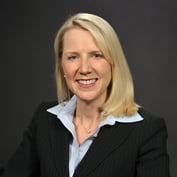What You Need to Know
- Advice-seeking increased with age, account balance, annual contribution level and changes in marital status, the study found.
- Since TDFs use inertia to participants’ advantage, TDF-only participants were significantly less likely to seek advice.
- The study's authors note potential downsides to TDF-only portfolios.
Default retirement plan features such as auto-enrollment and target date funds have proved their merit. Consider these statistics from Vanguard’s How America Saves 2022 report for year-end 2021:
- Fifty-six percent of Vanguard plans had adopted automatic enrollment, including 75% of plans with at least 1,000 participants. In 2021, because larger plans were more likely to offer it, 70% of participants were in plans with an automatic enrollment option.
- Sixty-four percent of Vanguard participants were solely invested in an automatic investment program. Fifty-six percent of all participants were invested in a single target-date fund.
But what happens if a participant could benefit from more active engagement with the plan than the defaults provide, such as seeking advice? A recent working paper from Jonathan Reuter at Boston College and David P. Richardson with the TIAA Institute examines the likelihood that participants would seek advice and offers suggestions for increasing engagement.
Increased Engagement With Online Tools
The authors recognize two channels that plan sponsors can use to “potentially improve the quality of retirement savings decisions.” The passive channel relies on default auto-features, while active engagement “relies on a suite of education, guidance, and advice services that help participants to make their own customized portfolio choices.”
The research study used participant-level data from 23 institutions served by TIAA between 2009 and 2014. Results indicated that advice-seeking increased with age, account balance, annual contribution level and changes in marital status. Another factor leading to more engagement with the plan: online tools.
“I was a little surprised by how much advice seeking increased when online tools were introduced,” Reuter says. “For example, the fraction of participants seeking advice on asset allocation during the year more than tripled, from under 2% to over 6%.”
Expanding the selection of online tools could be a good first step for sponsors seeking to increase participants’ engagement, Reuter maintains. “We find strong, I would even argue causal, evidence that participants with web access to their accounts are much more likely to seek advice,” he says.
“So, one option might be to enable web access for all participants by default. Once participants are on the website, providers can highlight on the home screen how changes in savings rate are likely to change the income stream in retirement, ask participants to take surveys about risk aversion, etc., and promote short videos focused on financial education or new plan features.”









 August 01, 2022 at 02:07 PM
August 01, 2022 at 02:07 PM











